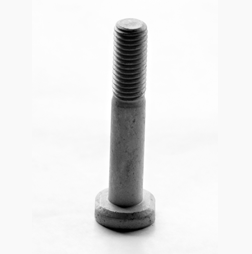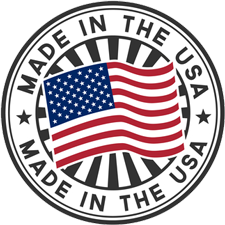What is a Bolt?
I’m glad you asked. If you search Google, you’ll find a lot of different answers. For one, Fastener Engineering calls a bolt “a mechanical fastener with a threaded shaft” while simultaneously stating that this same description can be used to define a screw.
Function: Part of a Fastening Team
Merriam Webster defines a bolt as “a metal rod or pin for fastening objects together that usually has a head at one end and a screw thread at the other and is secured by a nut.” In other words, a bolt is only one part of a fastening team, typically paired with a nut or sometimes a washer. With this definition, any fastener that does not require a nut to secure it would not be a bolt.

This definition uses the function of the part to define it, which is probably the most simple and accurate definition. But there may be other ways to define what is and is not a bolt. Specifically, there are certain features that we associate primarily with bolts.
Features: Heads, Shanks, and More
One of those features is (typically) a lack of point. In fact, Cambridge Dictionary specifically includes this in the definition, saying a bolt is “a screw-like metal object without a point, used with a nut to fasten things together.” It should be noted that this definition does not include special bolts, which may have features like dog points, MATpoints, and P-points.
In addition to lacking a point, bolts typically have only a partially threaded shaft. This unthreaded feature is called the shank (or sometimes shoulder). The shank creates an area on the bolt that is stronger and less elastic, less likely to sheer. It can also provide more versatility to the function, including acting an area for something attached to the bolt to move. Again, though, this is not true of all bolts, but would apply more to standard bolts.
Head shape is another defining feature of bolts. Unlike studs, bolts always have heads. Their most common head shape is a hexagon, as this provides flat surfaces for tools to apply torque while fastening. There are also square-head, hex flanged-head (basically a hex with a ring around it), round-head, and pan-head bolts.

Bolt Types
Other common bolt types include:
- – Carriage bolts (dome-shaped head with a square shoulder just below the head),
- – Stake bolts (a round-head with a knurled shoulder),
- – Clinch bolts (bolts with a locking feature under the head that is secured by a punching force), and
- – Weld bolts (bolts with heads that are welded into place via some type of projection or weld ring).
As you can see, defining a bolt can be tricky. You might find that what some call a bolt may actually be more stud- or screw-like in appearance. But if it functions like a bolt (i.e. has a head and fastens objects together along with a nut), then it’s probably safe to call it that. Either way, we’ll make the part for you. Send us a request for a quote today.


